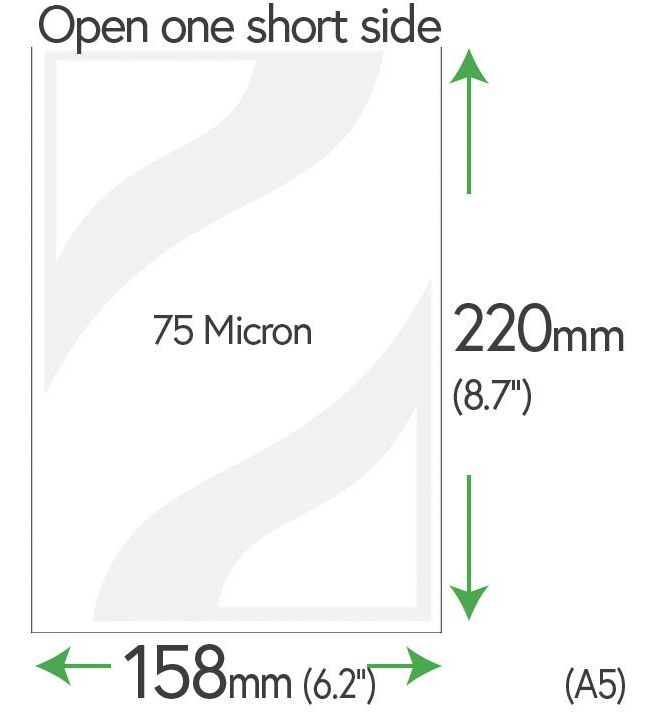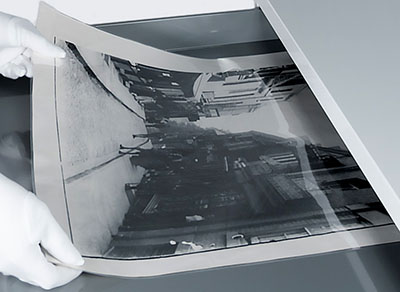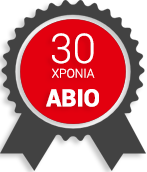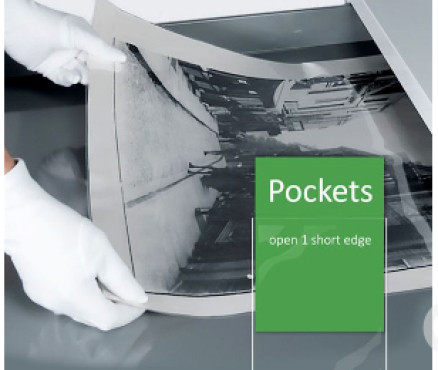ABIO - Main Component
Α5 - Tσέπη αρχειακό, διάφανο για ευαισθητα έγγραφα/φωτογραφιες - 220Χ158mm
Το διάφανο, ουδέτερο Melinex (Mylar) είναι ιδανικό για να φυλάξει κανείς πολύτιμα έγγραφα και φωτογραφίες. Δεν περιέχει καθόλου χημικά και είναι εγκεκριμένο για αυτή τη χρήση από όλα τα μουσιεία του κόσμου. Η διάσταση είναι Α5 + 10χιλ. περιθώριο.

Professional quality clear polyester storage pockets used in museums and galleries worldwide. PEL provides, from stock, more sizes of archival and photographic storage pockets/sleeves than anyone else in the UK - at the best prices.
- 50 or 75 micron options for most sizes
- Most print, paper & poster sizes covered i.e. A5, A4, A3, A2, A1, 5x7", 8x10" etc.
- Non-yellowing and inert, glass-clear museum standard polyester
- Incredibly strong, providing long-term protection whilst allowing handling
- Pockets open on one short side
Why Archival Polyester?
Professionals insist on polyester for storing art and other documents due to the glass-clear, inert protection it provides, knowing it will not crack or yellow with age like other plastic pockets. Our polyester pockets are so strong, they withstand constant handling, which lesser plastic products wouldn't.
Why Polyester?
Archival polyester, also known as Biaxially-oriented polyethylene terephthalate, ‘BoPET’ to its friends, is used across the globe to protect valuable works of art on paper. Photographs, Maps, Posters, Certificates, Prints.... archival polyester is the choice of professionals worldwide.
So What’s Mylar and Melinex?
Our polyester film (whether pockets, sleeves or rolls) is ‘archival polyester’. Some may refer to archival polyester film as ‘Mylar’ or ‘Melinex’ which are brand names owned by material  manufacturer Dupont. There are different grades of Mylar and Melinex available from Dupont, we ensure the polyester we supply is of the grade required by professional conservators - museum specification.
manufacturer Dupont. There are different grades of Mylar and Melinex available from Dupont, we ensure the polyester we supply is of the grade required by professional conservators - museum specification.
We are aware that some 'polyester' products available on the market are not 100% polyester but are actually coated with other materials to make them easier to weld, or to print upon. This is not something we offer, beware cheaper alternatives for this reason.
So why use archival polyester to protect objects?
Archival polyester offers a glass-clear, acid-free, non-yellowing/clouding, protective sleeve material, that allows you to handle and view works of art on paper.
Our archival polyester is free from any surface coatings, it’s chemically inert and won't react with, or cause damage to, items it comes in contact with…With a few exceptions (which apply to all forms of polyester), which we’ll mention below.
Importantly - Archival polyester doesn’t contain plasticisers – you will know well the  smell of plasticisers given off by PVC from items such as shower curtains. Anything with this ‘plastic’ smell should be avoided, plasticisers (PVC) are usually added for additional flexibility. Degradation of PVC can lead to development of harmful acid, or leeching into stored contents. Archival polyester is stiff, although it can be easily rolled, it doesn’t crumple, this ‘stiffness’ offers contents a good level of support and resistance from damage. Buying cheaper PVC pockets or sleeves is a false economy, they will become brittle, yellow or cloudy and damage the object you're trying to protect.
smell of plasticisers given off by PVC from items such as shower curtains. Anything with this ‘plastic’ smell should be avoided, plasticisers (PVC) are usually added for additional flexibility. Degradation of PVC can lead to development of harmful acid, or leeching into stored contents. Archival polyester is stiff, although it can be easily rolled, it doesn’t crumple, this ‘stiffness’ offers contents a good level of support and resistance from damage. Buying cheaper PVC pockets or sleeves is a false economy, they will become brittle, yellow or cloudy and damage the object you're trying to protect. 
When is a pocket a sleeve?
No, it’s nothing to do with having short arms. Generally, within the preservation fraternity, a  ‘pocket’ is a ‘pocket’, and a ‘sleeve’ a ‘sleeve’. Outside of those working with them every day, pockets can be referred to as ‘sleeves’, and ‘sleeves’ are, well, ‘sleeves’. Introduce L-velopes into the bargain and we have another ‘sleeve’, which isn’t technically a sleeve, but might also be a ‘wallet’ – confused? So for clarification purposes:
‘pocket’ is a ‘pocket’, and a ‘sleeve’ a ‘sleeve’. Outside of those working with them every day, pockets can be referred to as ‘sleeves’, and ‘sleeves’ are, well, ‘sleeves’. Introduce L-velopes into the bargain and we have another ‘sleeve’, which isn’t technically a sleeve, but might also be a ‘wallet’ – confused? So for clarification purposes:
- A pocket is sealed on three edges, generally leaving one short edge open
- A sleeve is sealed on two opposite edges, generally leaving 2 short edges open
- An L-velope is sealed on 2 adjacent edges forming an ‘L’ shaped Seal, leaving one long and one short open.
Each of these forms of enclosure have benefits which drive their suitability for items to be stored within. Consideration should be made as to how often, if ever, the contents will need to be removed, or viewed. As a general guide:
Pockets - A clear polyester pocket is the least accessible enclosure, being sealed on three sides, if items are unlikely to be removed regularly, but viewed regularly, then a clear pocket is the most suitable form, this could include items that depend on the static cling of the clear polyester to keep them in-place prior to conservation. As pockets are only open on one side they are also the most suitable starting point for closed encapsulation, sealing the final edge with transparent polyester tape or welding with a polyester welding machine.
Sleeves – Sleeves are more accessible than a pocket allowing slightly easier insertion or removal of weaker papers or photographs. Being open on two edges does mean enclosed items are more liable to falling out of the sleeve, but generally the static cling will hold items in-place.
L-Velope – Sealed on only 2 adjacent sides forming an L-shaped weld, L-velopes offer the most accessible form of encapsulation, or sleeve. These are ideal for storage of papers with multiple pages, enabling viewing or removal, items could include letters in original envelopes, newspapers or comics. Again, the compromise for higher accessibility is the increased risk of contents accidentally falling out, static cling will generally hold most items in-place.
So, what should/shouldn’t I store in my Clear Polyester Sleeves or Pockets?
You can store most items safely in Polyester, however the clear material does hold a small electrostatic charge. You can use this to your advantage, it prevents contents from accidentally falling out, it also holds fragments in place when encapsulating. It can, however, damage friable materials such as gouache, pastels or charcoal works of art on paper. The static charge is very light, it can be increased by rubbing with another piece of polyester if required.
You also need to be careful storing some older photographs with a gelatin emulsion. The emulsion can bond to polyester, in this case you are better to use an archival paper enclosure, or interleave with acid-free tissue.
Otherwise, suitability for using clear polyester material is really limited to dimensions.













 ΤΗΛ 210-7707587
ΤΗΛ 210-7707587